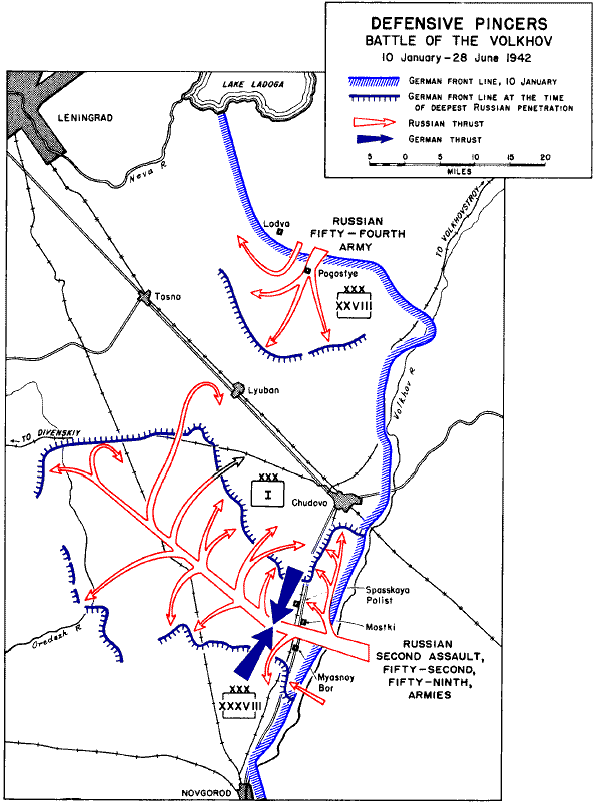|
Andrey Lyakhov
Andrey Nikitovich Lyakhov (; 25 August 1909 – 19 September 1943) was a Red Army Polkovnik, colonel killed in World War II who commanded the 95th Guards Rifle Division. Early life and prewar service Andrey Nikitovich Lyakhov was born on 25 August 1909 in the village of Konstantinovka, Konstantinovskoy ''volost'', Petrovsky ''uyezd'', Stavropol Governorate. Before his military service, he began studies at the Stavropol Agricultural ''Tekhnikum'' in 1928, while working as a livestock specialist at the ''sovkhoz Plemrassadnik'', a sheep farm part of the ''tekhnikum''. Conscripted into the Red Army on 13 November 1931 by the Voroshilovsky RVK in Voroshilov, Lyakhov was sent as a cadet to the one-year conscript detachment of the 65th Rifle Regiment of the 22nd Rifle Division (Soviet Union), 22nd Rifle Division at Novorossiysk. After graduating in October 1932, he was appointed to the 25th (later the 112th) Rifle Regiment of the 38th Rifle Division (Soviet Union), 38th Rifle Division a ... [...More Info...] [...Related Items...] OR: [Wikipedia] [Google] [Baidu] |
Stavropol Governorate
Stavropol Governorate () was an administrative-territorial unit (''guberniya'') of the Russian Empire and the Russian SFSR. It roughly corresponded to most of present-day Stavropol Krai. It was created in 1847 and disbanded in 1924. Demographics As of 1897, 873,301 people populated the oblast. Russians constituted the majority of the population. Significant minorities consisted of Ukrainians. Total Slavic peoples, Slavic population was 804,153 (92%) Ethnic groups in 1897 References Further reading * Stavropol Governorate, History of the North Caucasus Governorates of the Russian Empire {{Russia-geo-stub ... [...More Info...] [...Related Items...] OR: [Wikipedia] [Google] [Baidu] |
Junior Lieutenant
Junior lieutenant is a junior officer rank in several countries, comparable to Sub-lieutenant. Germany In East Germany's National People's Army, the rank of () was introduced in 1956 and used until German reunification in 1990. Eastern Europe In many Eastern European countries, the rank of junior lieutenant is used. Russia The rank of Junior lieutenant () was introduced into the Russian military in 1937. Junior lieutenant insignia Army insignia File:9.AzAF-JLT.png, (Azerbaijani Land Forces) File:Post-Soviet-Army-OF-1a.svg, (Belarusian Ground Forces) File:10.RBrLF-2LT.svg, (Royal Brunei Land Force) File:07.Kyrgyzstan Army-JLT.svg, (Kyrgyz Army) File:Malaysia-army-OF-1a.svg, (Malaysian Army) File:Russia-Army-OF-1a-2010.svg, (Russian Ground Forces) File:Post-Soviet-Army-OF-1a.svg, (Tajik Ground Forces) File:Post-Soviet-Army-OF-1a.svg, (Turkmen Ground Forces) File:UA shoulder mark 11.svg, (Ukrainian Ground Forces and Ukrainian Air Assault Forces) Navy insignia File:Azerbaijan- ... [...More Info...] [...Related Items...] OR: [Wikipedia] [Google] [Baidu] |
Dnieper
The Dnieper or Dnepr ( ), also called Dnipro ( ), is one of the major transboundary rivers of Europe, rising in the Valdai Hills near Smolensk, Russia, before flowing through Belarus and Ukraine to the Black Sea. Approximately long, with a drainage basin of , it is the longest river of Ukraine and Belarus and the fourth- longest river in Europe, after the Volga, Danube, and Ural rivers. In antiquity, the river was part of the Amber Road trade routes. During the Ruin in the later 17th century, the area was contested between the Polish–Lithuanian Commonwealth and Russia, dividing what is now Ukraine into areas described by its right and left banks. During the Soviet period, the river became noted for its major hydroelectric dams and large reservoirs. The 1986 Chernobyl disaster occurred on the Pripyat River, a tributary of the Dnieper, just upstream from its confluence with the Dnieper. The Dnieper is an important navigable waterway for the economy of Ukraine and i ... [...More Info...] [...Related Items...] OR: [Wikipedia] [Google] [Baidu] |
Brovary
Brovary (, ; ) is a List of cities in Ukraine, city in Kyiv Oblast, northern Ukraine, situated to the east of the capital Kyiv and part of the Kyiv metropolitan area. It serves as the administrative centre of Brovary Raion. Brovary hosts the administration of Brovary urban hromada, one of the hromadas of Ukraine. In 2024, about 100,000 people live in the city. History Early history Brovary is a historic town, first mentioned in 1630. At the time there were only 60 or 70 houses in Brovary, but in 1649 a Cossack sotnia is known to have been formed there. Cossacks took part in the Khmelnytsky Uprising under Bohdan Khmelnytsky's leadership. Originally, the town was called Brovari (), but the name was changed in 1969 to make it Russification of Ukraine, more similar to Russian. The name, translated from Ukrainian, means 'breweries' (and is a loanword from Dutch language, Dutch). The town got its name after breweries where special beer was made. Travellers who went to Kyiv often ... [...More Info...] [...Related Items...] OR: [Wikipedia] [Google] [Baidu] |
26th Army (Soviet Union)
The 26th Army ( Russian: 26-я армия ''26-ya armiya'') was a field army of the Soviet Union's Red Army, active from 1941. Operational history First Formation 26th Army was a part of the Southwestern Front and defended the Soviet-German border between Przemyśl and the Carpathian Mountains in June 1941. The Army was located on the eastern bank of San river manning the 8th Fortified District. The 26th Army commander was Lt. Gen. Fyodor Kostenko who was a Ukrainian. Its opponent was the German Seventeenth Army under command of General Carl-Heinrich von Stülpnagel. The 26th Army consisted of the 8th Rifle Corps, with the 99th Rifle Division, 173rd Rifle Division, and the 72nd Mountain Rifle Division, the 8th Fortified District, a number of artillery units (the 2nd Anti-Tank Brigade, 233rd Corps Artillery Regiment, 236th Corps Artillery Regiment, and the 28th Independent Anti-Aircraft Squadron, the 8th Mechanised Corps with the 12th Tank Division, 34th Tank Division, ... [...More Info...] [...Related Items...] OR: [Wikipedia] [Google] [Baidu] |
Southwestern Front (Soviet Union)
The Southwestern Front was a front of the Red Army during the Second World War, formed thrice. It was first created on June 22, 1941 from the Kiev Special Military District. The western boundary of the front in June 1941 was 865 km long, from the Pripyat River and the town of Wlodawa to the Prut River and the town of Lipkany at the border with Romania. It connected to the north with the Western Front, which extended to the Lithuanian border, and to the south with the Southern Front, which extended to the city of Odessa on the Black Sea. Operational history The Southwestern Front was on the main axis of attack by the German Army Group South during Operation Barbarossa. At the outbreak of war with Germany, the Front was commanded by Mikhail Kirponos and contained the Soviet 5th, 6th, 26th, and 12th Armies along the frontier. 16th and 19th Armies were in reserve behind the forward forces. These forces took part in the tank battles in western Ukraine Ukra ... [...More Info...] [...Related Items...] OR: [Wikipedia] [Google] [Baidu] |
Operation Barbarossa
Operation Barbarossa was the invasion of the Soviet Union by Nazi Germany and several of its European Axis allies starting on Sunday, 22 June 1941, during World War II. More than 3.8 million Axis troops invaded the western Soviet Union along a front, with the main goal of capturing territory up to a line between Arkhangelsk and Astrakhan, known as the A-A line. The attack became the largest and costliest military offensive in history, with around 10 million combatants taking part in the opening phase and over 8 million casualties by the end of the operation on 5 December 1941. It marked a major escalation of World War II, opened the Eastern Front—the largest and deadliest land war in history—and brought the Soviet Union into the Allied powers. The operation, code-named after the Holy Roman Emperor Frederick Barbarossa ("red beard"), put into action Nazi Germany's ideological goals of eradicating communism and conquering the western Soviet Union to repopulate it w ... [...More Info...] [...Related Items...] OR: [Wikipedia] [Google] [Baidu] |
Frunze Military Academy
The M. V. Frunze Military Academy (), or in full the Military Order of Lenin and the October Revolution, Red Banner, Order of Suvorov Academy in the name of M. V. Frunze (), was a military academy of the Soviet and later the Russian Armed Forces. Established in 1918 to train officers for the newly formed Red Army, the academy was one of the most prestigious military educational institutions in the Soviet Union. At first titled the General Staff Academy of the Red Army, taking on a similar role to its pre-revolutionary predecessor, the Imperial Nicholas Military Academy, it was renamed the Military Academy in 1921 and then the M. V. Frunze Military Academy in 1925, honouring Mikhail Frunze, who had been a commandant of the academy. It became a higher staff college with the addition of courses for senior command officers in the 1930s, before these were transferred in 1936 to the newly formed Military Academy of the General Staff. By this time many of the Red Army's most senior c ... [...More Info...] [...Related Items...] OR: [Wikipedia] [Google] [Baidu] |
Vladikavkaz
Vladikavkaz, formerly known as Ordzhonikidze () or Dzaudzhikau (), is the capital city of North Ossetia–Alania, Russia. It is located in the southeast of the republic at the foothills of the Caucasus, situated on the Terek (river), Terek River. The city's population was 295,830 as of the 2021 Russian census, 2021 Census. As a result, Vladikavkaz is one of the most populous cities in the North Caucasus region. The city is an Industrial sector, industrial and transport, transportation centre. Manufactured products include processed zinc and lead, machinery, chemical substance, chemicals, clothing and food products. Etymology The name ''Vladikavkaz'', derived from the Russian language, literally means "ruler of the Caucasus". The Ossetian name Dzæwdžyqæw/Dzæwægighæw literally means " settlement". In 1911, wrote that the Ossetians prove that fortress was founded on the site of the Ingush village Zaur (village), Zaur by the name of Vladikavkaz in the Ossetian language: In ... [...More Info...] [...Related Items...] OR: [Wikipedia] [Google] [Baidu] |
North Caucasus Military District
The North Caucasus Military District was a military district of the Russian Armed Forces from 1992-2010. Before 1992 it had been part of the Soviet Armed Forces since 1918. In 2010 it became the Southern Military District and lately also included the Black Sea Fleet and Caspian Flotilla. It comprised the Republic of Adygeya, the Republic of Dagestan, the Ingushetia, Republic of Ingushetia, the Kabardino-Balkar Republic, the Kalmykia, Republic of Kalmykia, the Karachay–Cherkessia, Karachay–Cherkess Republic, the North Ossetia–Alania, Republic of North Osetia-Alaniya, the Chechnya, Chechen Republic, Krasnodar Krai, Stavropol Krai, and Astrakhan Oblast, Astrakhan, Volgograd Oblast, Volgograd, and Rostov Oblast, Rostov oblasts. It has the same borders as the Southern Federal District. Its last commander was Lieutenant General Alexander Galkin, appointed from January 2010. History The District was originally established on 4 May 1918, and reorganized as a field formation during t ... [...More Info...] [...Related Items...] OR: [Wikipedia] [Google] [Baidu] |
165th Rifle Division
The 165th Rifle Division was originally formed as an infantry division of the Red Army in the North Caucasus Military District in July 1940, based on the ''shtat'' (table of organization and equipment) of September 13, 1939. It was still in that District at the time of the German invasion, and it was soon moved to the vicinity of Kyiv as part of Southwestern Front. It would remain defending south of the Ukrainian capital into September, eventually as part of 37th Army, when it was deeply encircled and destroyed. A new 165th was created in January 1942 in the Ural Military District based on a 400-series division that began forming the previous month. After forming up until April it was sent west by rail where it was assigned to Leningrad Front. In early June, as part of 59th Army, it took part in attacks to re-establish ground communications with the encircled 2nd Shock Army, but suffered heavy losses without gaining any meaningful success. It was then withdrawn to second echelon, ... [...More Info...] [...Related Items...] OR: [Wikipedia] [Google] [Baidu] |





